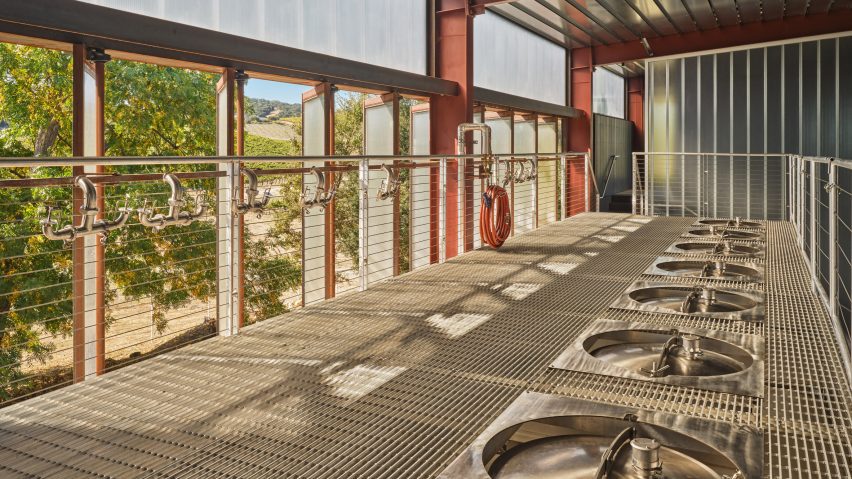
Clayton Korte creates "familiar yet exclusive" winery buildings in California
Polycarbonate, steel and concrete are among the resilient materials used to form a pair of industrial buildings at Fulldraw Vineyard, designed by American studio Clayton Korte.
Set on 100 acres (40 hectares), the Fulldraw Vineyard sits within an agricultural region along California's Central Coast, in the town of Paso Robles. The winery is known for its production of Rhone-style wines.
Clayton Korte was tasked by the company's owners, Connor and Rebecca McMahon, to create a winery complex that "represents their personality and passion for winemaking".
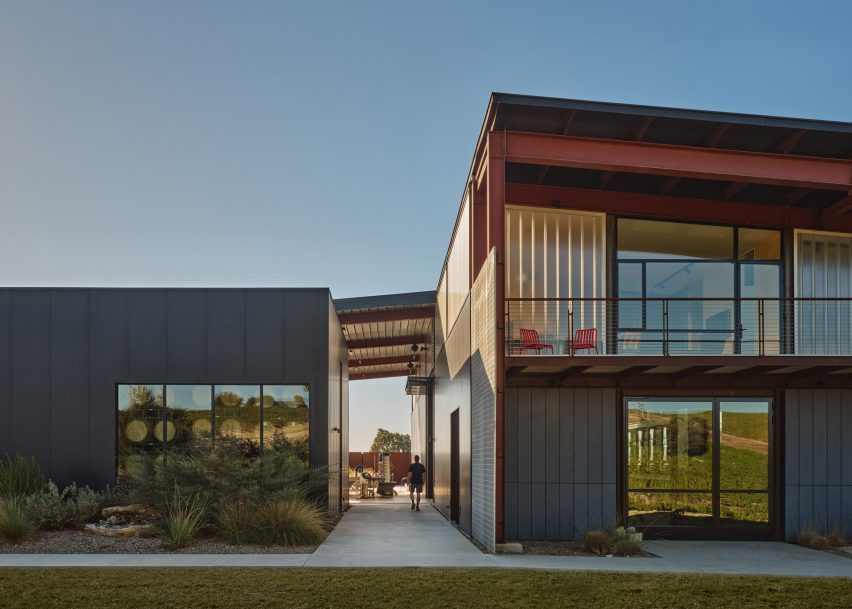
"The solution is a winery that is familiar yet exclusive, comfortable yet sophisticated – seemingly disparate ideas that come together through a visitor experience that is as curated as it is intimate," said the Texas-based architectural studio.
The team designed three buildings for the site.
The first two – a 6,972-square-foot (648-square-metre) fermentation building and a 2,170-square-foot (202-square-metre) storage facility – have been completed and will support the annual production of up to 10,000 cases of wine.
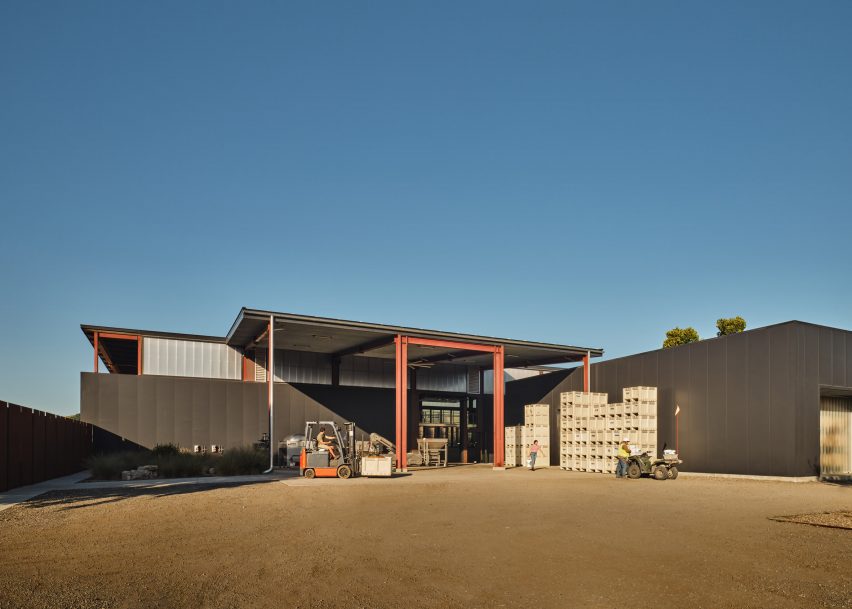
The third structure will hold a tasting room and is slated to open in 2026.
All of the structures are designed to offer a connection to the rolling terrain striped with grape vines.
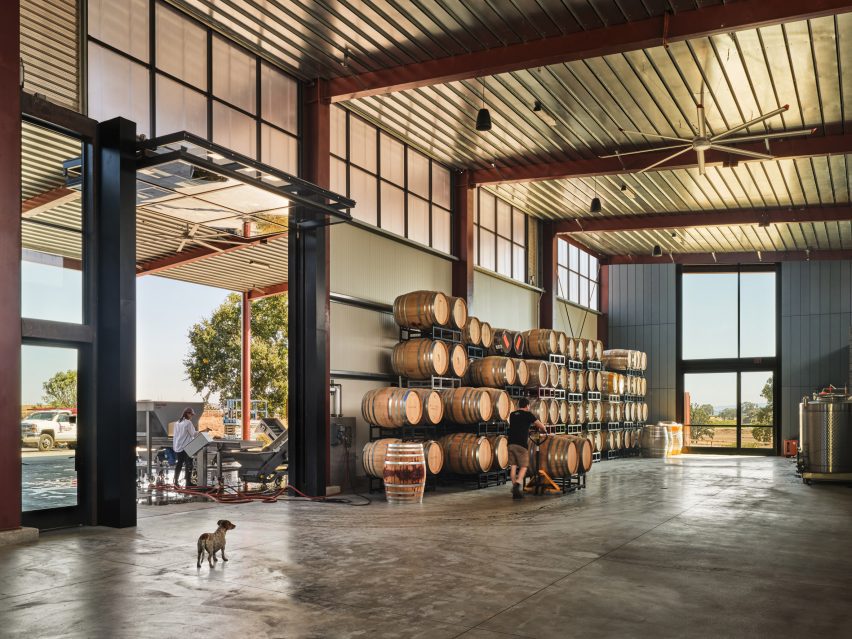
"Indoors and out, the facilities provide a direct connection to the surrounding scenic landscape, as each of buildings overlooks the vineyard and the region," the team said.
Accessed via a drive that loops through the vineyard, the fermentation building and storage facility are arranged in an L-shape around a crush pad.
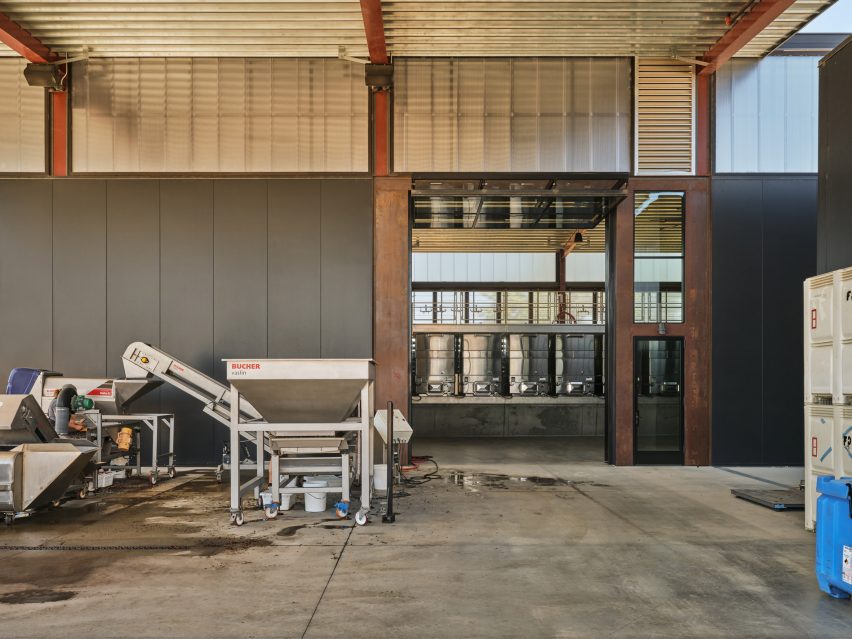
The site's topography, the sun's path and prevailing breezes informed the design of the buildings. A photovoltaic system helps reduce the winery's reliance on energy from the utility grid.
For the material palette, the team used a mix of resilient options such as burnished concrete, fibre cement and weathering steel. Steel beams and columns painted orangey-red offer pops of colour.
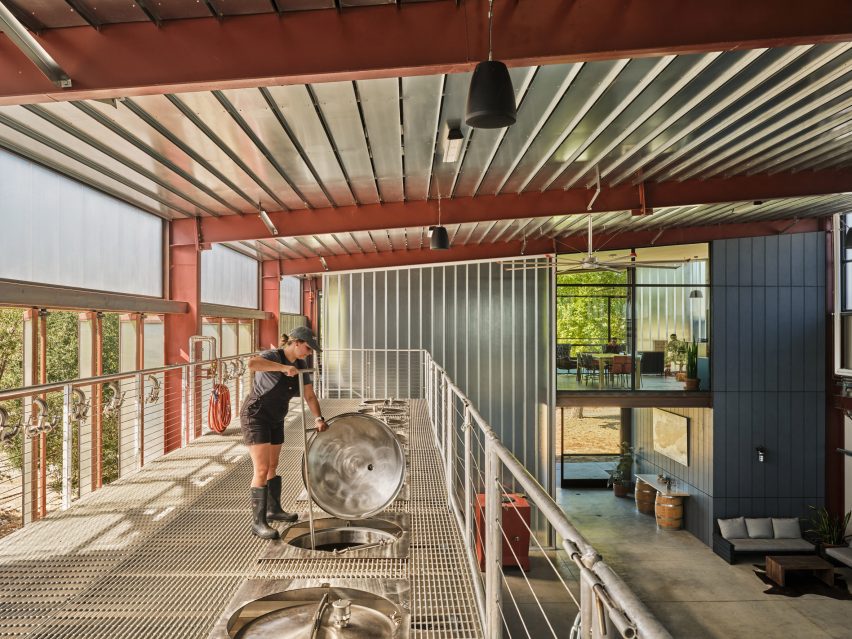
"The use of simple forms, along with honest materials and textures, help break down the scale of the buildings to fit within its context," the team said.
To provide an optimal climate indoors, the buildings are relatively opaque along the western elevation, where the sun exposure and winds are most intense.
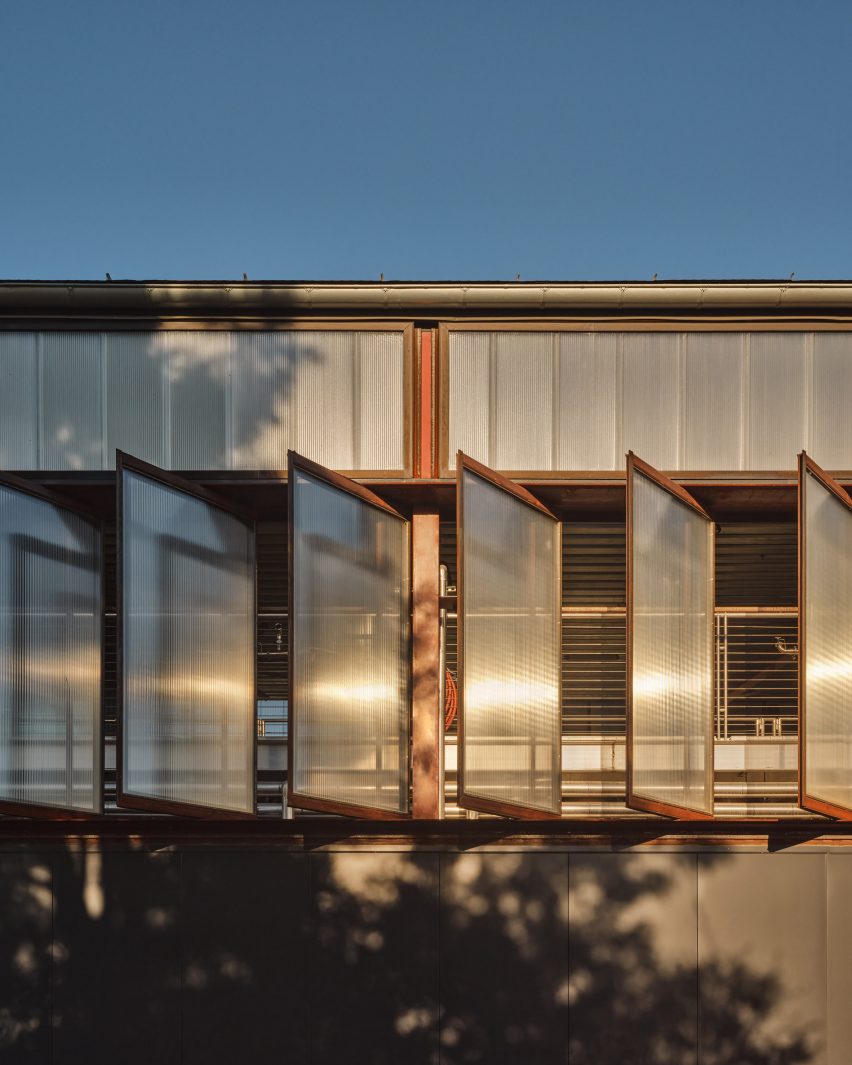
Openings were carefully placed to facilitate cross-ventilation, night cooling and daylit work environments.
In the fermentation building, one finds a tall, garage-style door with panels that fold up and down. Beyond its aesthetic appeal, the door is "very functional for back-and-forth forklift traffic", the team said.
Along the building's upper level, fresh air flows in through polycarbonate-glazed windows that are tied together and pivot open and close in unison.
Polycarbonate was used in other areas, too, including an office window, which emits diffused daylight. Daylight also enters the space through a wall made of channel glass.
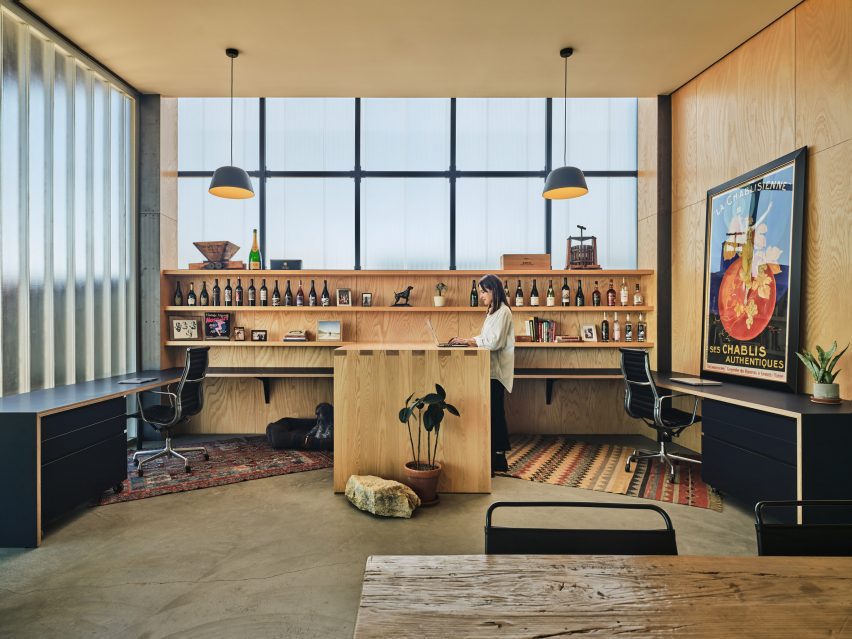
Other wine-related projects by Clayton Korte, formerly known as Clayton & Little, include a wine cave embedded in a Texas hillside and a weathering steel barn created for the James Berry Vineyard in Paso Robles.
The photography is by Likeness Studio.
Project credits:
Architect: Clayton Korte
Clayton Korte team: Brian Korte (principal), Camden Greenlee (associate), Christian Hertzog (project manager)
Planning consultant: Kirk Consulting
General contractor: Rarig Construction
Civil engineer: Above Grade Engineering
Structural engineer: SSG Structural Engineers
M+P engineer: 3C Engineering
Electrical engineer: Thoma Electric
Lighting consultant: FMS Partners in Architectural Lighting
Fire protection engineer: Collings and Associates
Access compliance: Access Compliance Consultants, Inc
Energy compliance: In Balance Green Consulting
Owners/vintners: Connor and Rebecca McMahon